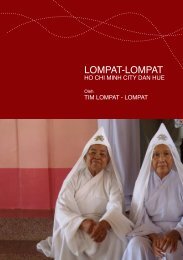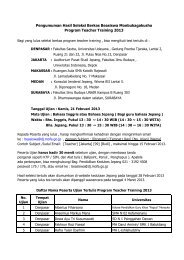9700_y16_sy
9700_y16_sy
9700_y16_sy
You also want an ePaper? Increase the reach of your titles
YUMPU automatically turns print PDFs into web optimized ePapers that Google loves.
Cambridge International AS and A Level Biology <strong>9700</strong> <strong>sy</strong>llabus Syllabus content<br />
7 Transport in plants<br />
Flowering plants do not have compact bodies like those of animals. Leaves and extensive root <strong>sy</strong>stems<br />
spread out to obtain the light energy, water, mineral ions and carbon dioxide that plants gain from their<br />
environment to make organic molecules, such as sugars and amino acids. Transport <strong>sy</strong>stems in plants<br />
move substances from where they are absorbed or produced to where they are stored or used. Plants<br />
do not have <strong>sy</strong>stems for transporting oxygen and carbon dioxide; instead these gases diffuse through air<br />
spaces within stems, roots and leaves.<br />
Candidates will be expected to use the knowledge gained in this section to solve problems in familiar and<br />
unfamiliar contexts.<br />
Learning outcomes<br />
Candidates should be able to:<br />
7.1 Structure of transport tissues<br />
Plants have two transport<br />
tissues: xylem and phloem.<br />
a) draw and label from prepared slides plan diagrams of<br />
transverse sections of stems, roots and leaves of herbaceous<br />
dicotyledonous plants using an eyepiece graticule to show<br />
tissues in correct proportions (see 1.1c)<br />
b) draw and label from prepared slides the cells in the<br />
different tissues in roots, stems and leaves of herbaceous<br />
dicotyledonous plants using transverse and longitudinal<br />
sections<br />
c) draw and label from prepared slides the structure of xylem<br />
vessel elements, phloem sieve tube elements and companion<br />
cells and be able to recognise these using the light microscope<br />
d) relate the structure of xylem vessel elements, phloem sieve<br />
tube elements and companion cells to their functions<br />
Back to contents page<br />
www.cie.org.uk/alevel<br />
25





